Colleen Hulett offers guided mushroom walks in the Ottawa-Gatineau area. You can find more information on her website: calabogiehiker.com
The walk was organized at BeetBox Farm and took place on NCC property.
The notes in this file have been supplemented with my own research and have not been fact-checked. I make no guarantees and this article should not be used as a reputable source of information. These are simply my notes that I took during the event.
🔎 General Mushroom Hunting Notes
- There are three main categories of mushrooms: Gilled, Polypore, and Hydnoid (teeth).
- Small, typical-looking brown mushrooms that grow from the ground are not typically edible.
- When mushroom hunting, be sure to bring paper bags or wax paper to separate the mushrooms. Do not store an assortment of mushrooms together, in case you mix them up or later realize that they were not what you initially identified them as.
- Mushrooms should be picked young, as some will become home to maggots as they get older.
- You should eat what you find on the same day you harvest it. If you can’t, store in a bag, in a bowl of ice water, in the fridge, for up to 3 days.
- When eating something you harvested in the wild, always keep one separate. If something goes wrong and you get sick, bring this leftover mushroom to the hospital with you.
- You can die from swallowing the wrong mushroom, but not from tasting it. Putting a piece in your mouth, then spitting it out and rinsing your mouth with water is an important method of identification.
- If you find wood with strange white lines or patches, these are mushrooms waiting to happen! Mark down the location and come back to visit after a rainfall.
- The best time to hunt for mushrooms is a couple of days after it rains.
- If you find a mushroom that you want, harvest it immediately. If you give it a couple more days to grow, something else in the forest will eat it before you do.
- Search for disturbed areas with lots of dead logs with the bark still on. If you find dead logs, but all stripped of bark, then you probably won’t find many mushrooms.
- Birch trees are excellent mushroom hosts
- When trying to identify a cluster of mushrooms, look for two very close together, one growing above the other. The bottom mushroom is likely to contain a spore print on its cap of the one growing above it.
- Perennial polypores have rings on their top sides, similar to trees.
- Mushrooms can be “planted” either through pieces of mushroom, or through spore prints. The spores on a spore print can be viable for up to three years.
📔 Specific Mushrooms
Oyster Mushrooms
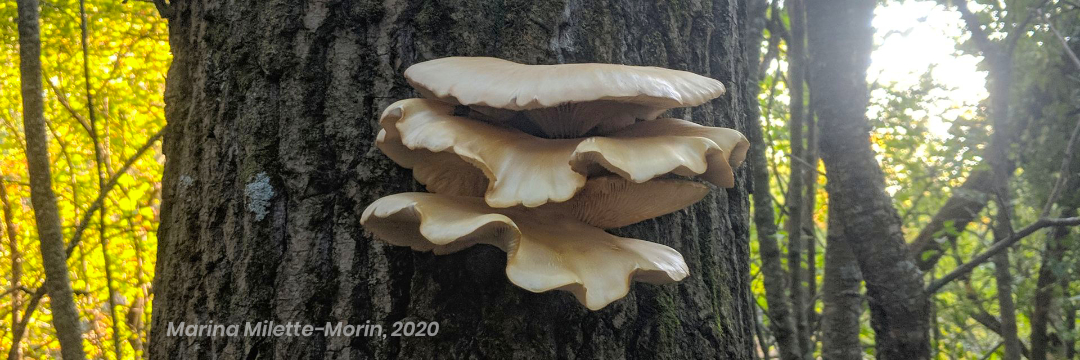
Identification
- Can be found on standing trees or downed logs of hardwood
- Colour should be white, the browner they get the less suitable they are for eating
- Wavy edge, little to no stem (younger ones may appear to have more stem)
- Smells like licorice
Similar Varieties
- Angel Wing Mushroom (Pleurocybella porrigens)
- Considered poisonous (deadly)
- Grows on dead coniferous logs
- Not as thick or beige/brown as oyster mushrooms
- Red-banded polypore also smells like licorice
Enoki Velvet Foot
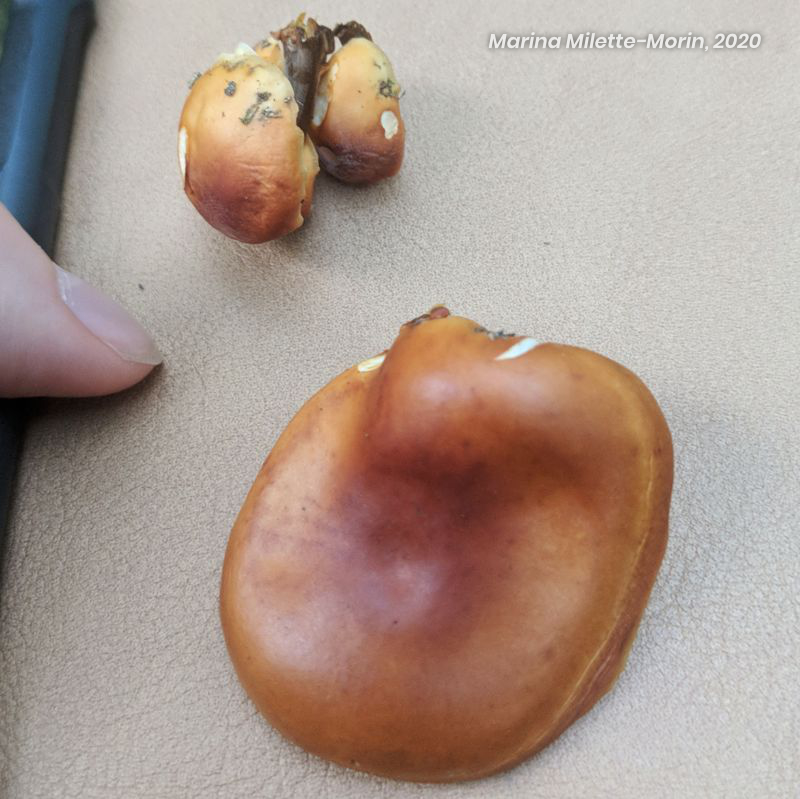
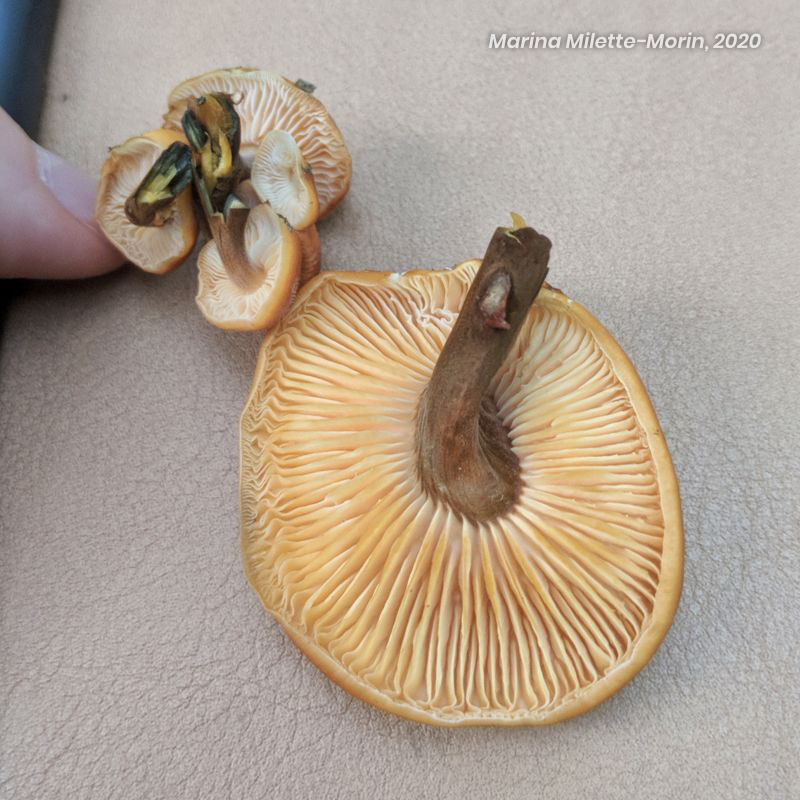
Identification
- Can be found nearly year-round, even in February
- Should be orange, with a slightly velvety stem
- When they’re young, should be gooey. Can still be a little gooey when perfect for harvesting
- Don’t harvest before stem is velvety to the touch
- Grows in colonies
- Turns red and entirely velvety when old
Similar Varieties
- Galerina marginata: categorized as a “little brown mushroom” that should not be eaten (poisonous). When young, these mushrooms have a cap “ring” on their stem.
Puffball
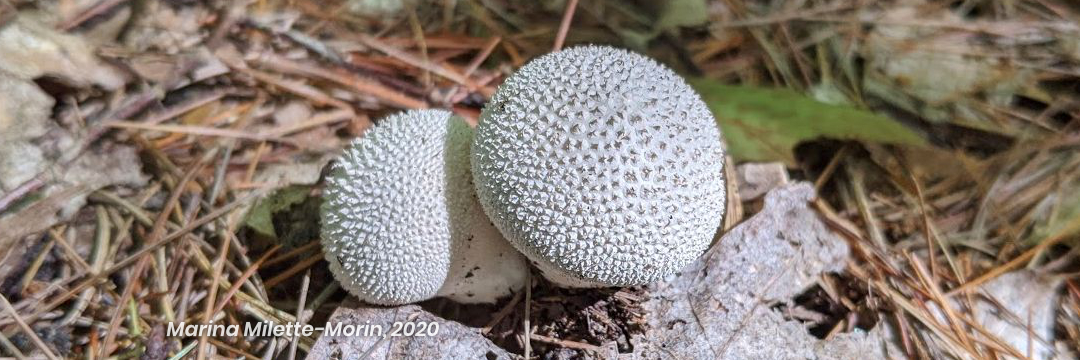
Identification
- Should be entirely white, no brown or black spots
- Brown puffballs are either too old, or poisonous.
- Before consumption, cut each mushroom in half to ensure there are no brown or black spots. It should be 100% white all the way through. If you find a small black spot in the centre, it’s no good.
Similar Varieties
- Some Amanita species can look similar at a young age.
Chicken of the Woods
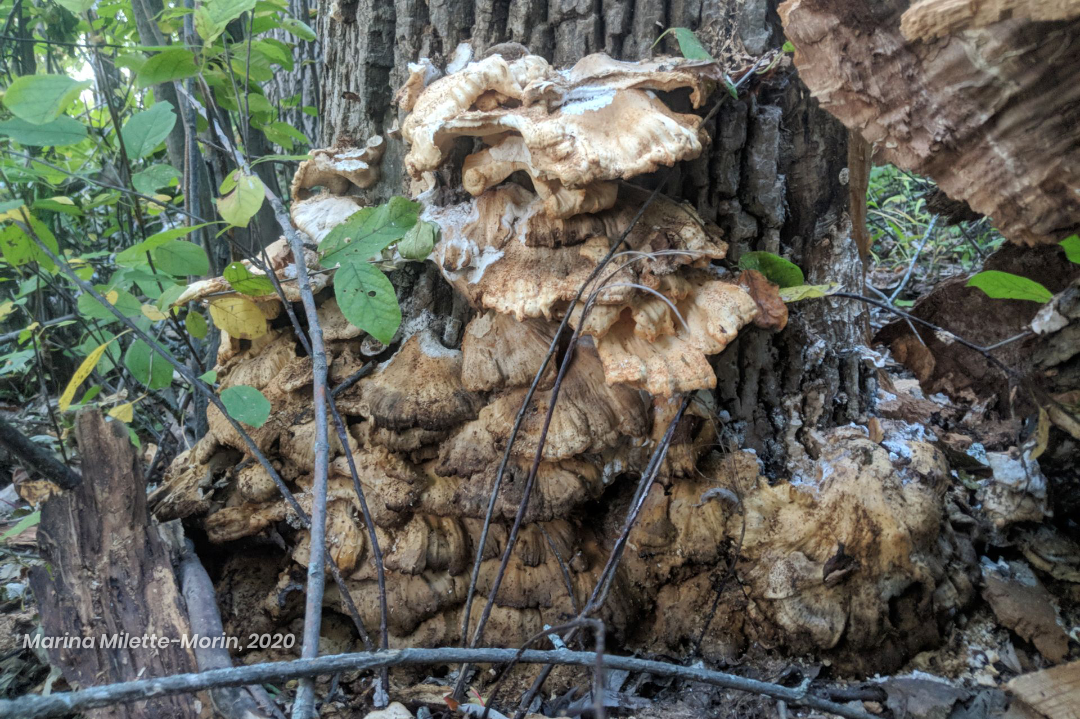
Identification
- Grows on trees
- Large colonies
- Top should be orange, underside should be white or yellow
- Will likely grow back year after year in the same spot
Similar Varieties
- Jack-O-Lantern Mushroom (Omphalotus olearius): similar-looking but has gills. Poisonous, but easy to distinguish.
- Velvet-top fungus (Phaeolus schweinitzii): similar-looking, but tough and hard. Not edible, but not poisonous.
- Hen of the Woods: not visually similar, but has a similar name. Also edible.
Turkey Tail
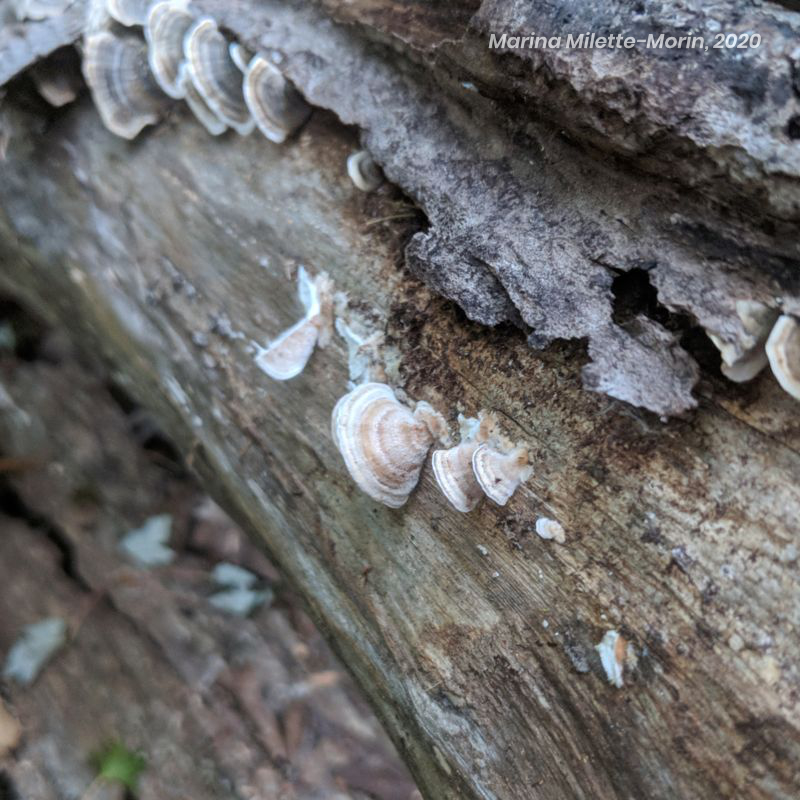
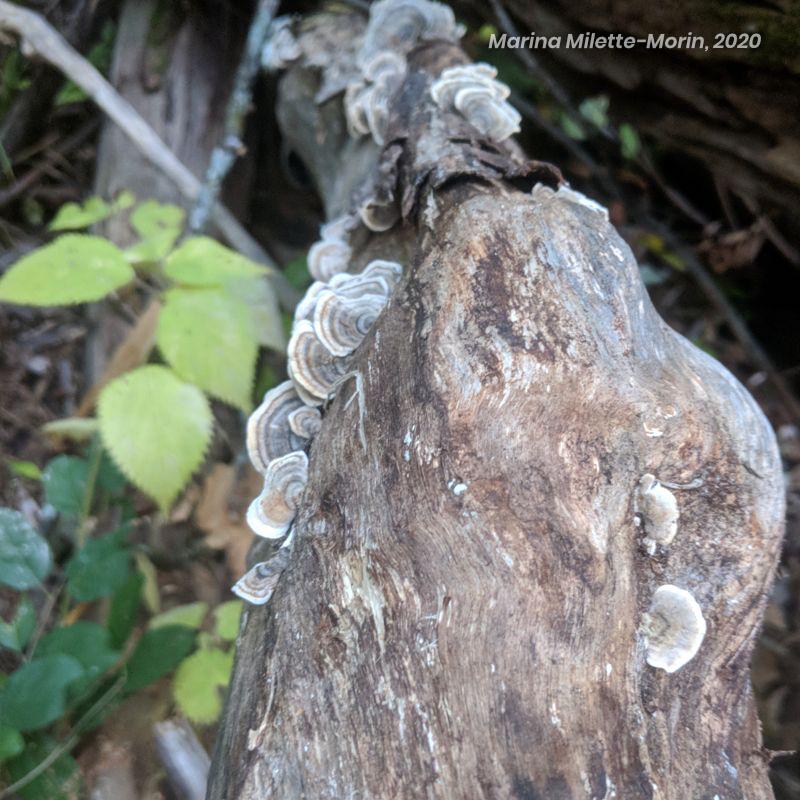
Identification
- White
- Tiny, barely-visible pores
- Should be soft and pliable when harvested
- Dry in the sun spore-side up
- Used as a tea, not a food
Similar Varieties
- Similar look-alikes have much larger, more distinct pores and striped tops
White Cheese Polypore
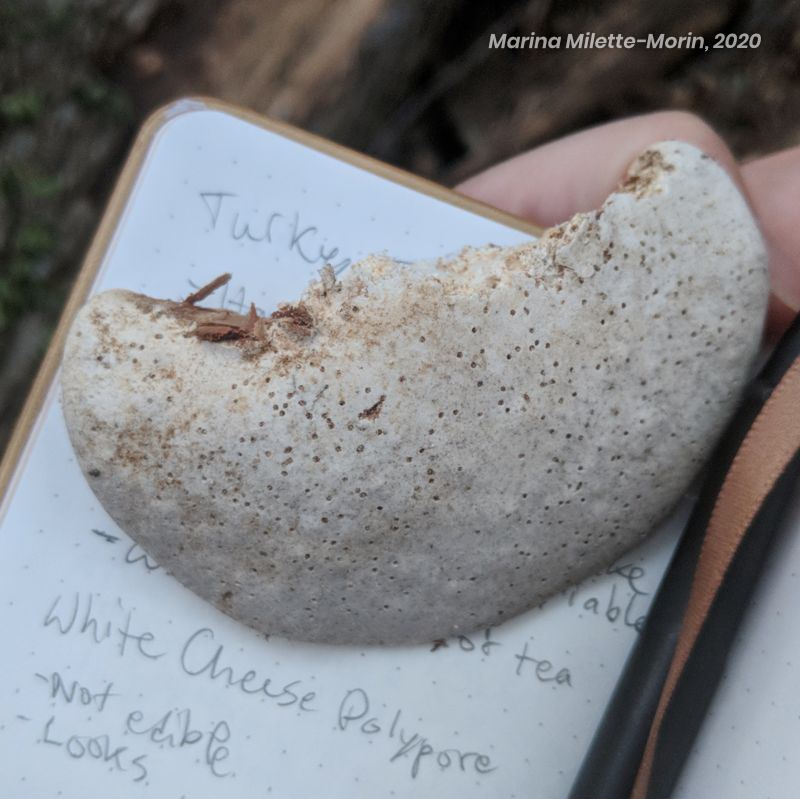
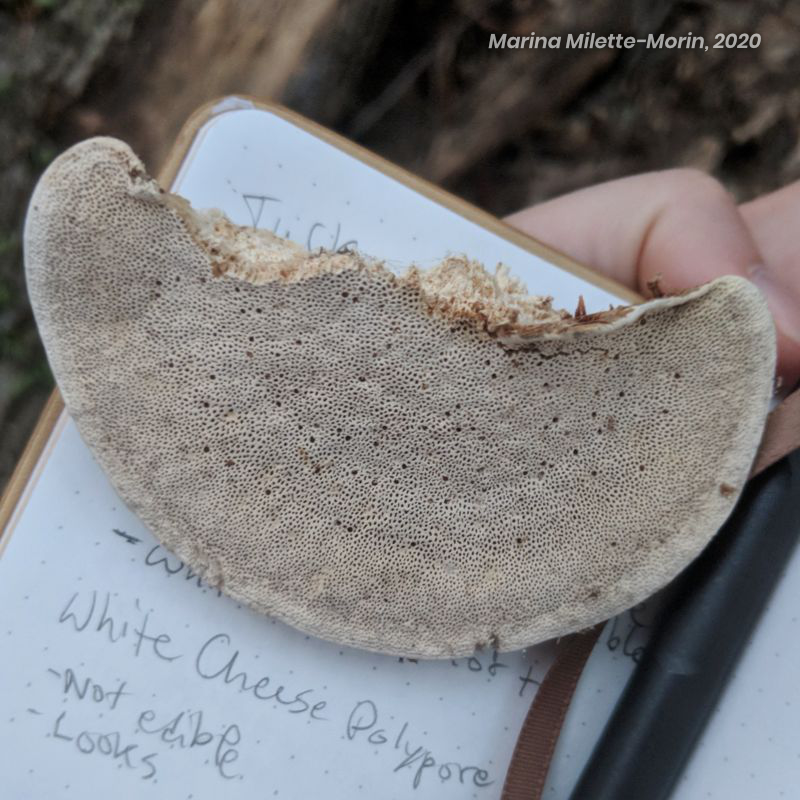
Identification
- Looks like mushy white cheese when young
- Not edible, but very common
📚 Suggested Reading List
- All That the Rain Promises and More: A Hip Pocket Guide to Western Mushrooms by David Arora
- Mushrooms and Other Fungi of North America by Roger Phillips
- Mushrooms Demystified by David Arora
- Mycelium Running: How Mushrooms Can Help Save the World by Paul Stamets
- Radical Mycology: A Treatise On Seeing & Working With Fungi by Peter McCoy
- The Audubon Society Field Guide to North American Mushrooms by Gary Lincoff & Carol Nehring
- The Complete Mushroom Hunter, Revised: Illustrated Guide to Foraging, Harvesting, and Enjoying Wild Mushrooms by Gary Lincoff
- The Fungal Pharmacy: The Complete Guide to Medicinal Mushrooms and Lichens of North America by Robert Rogers